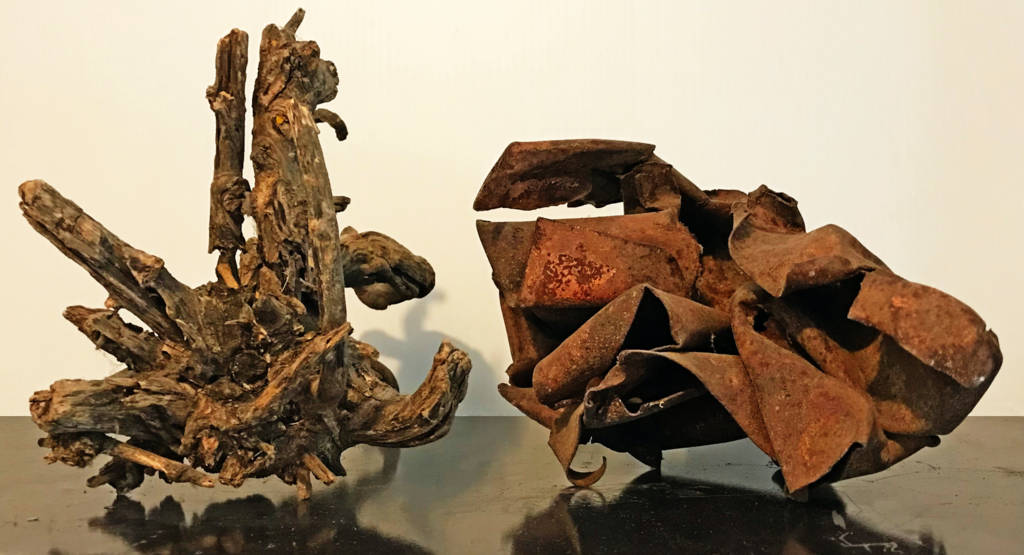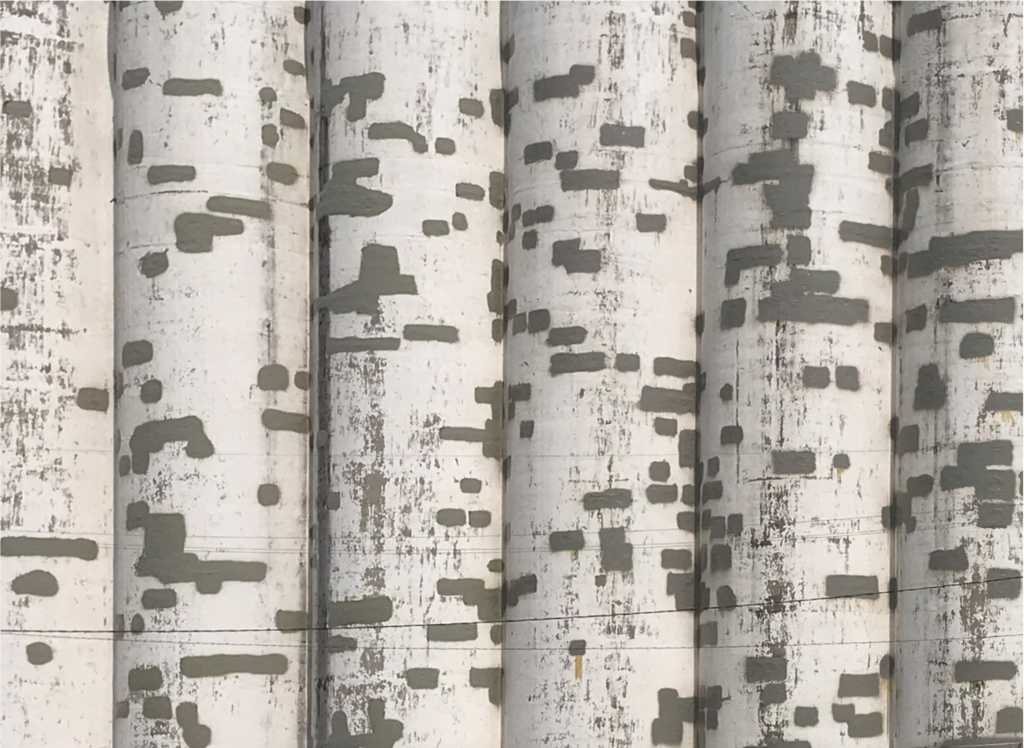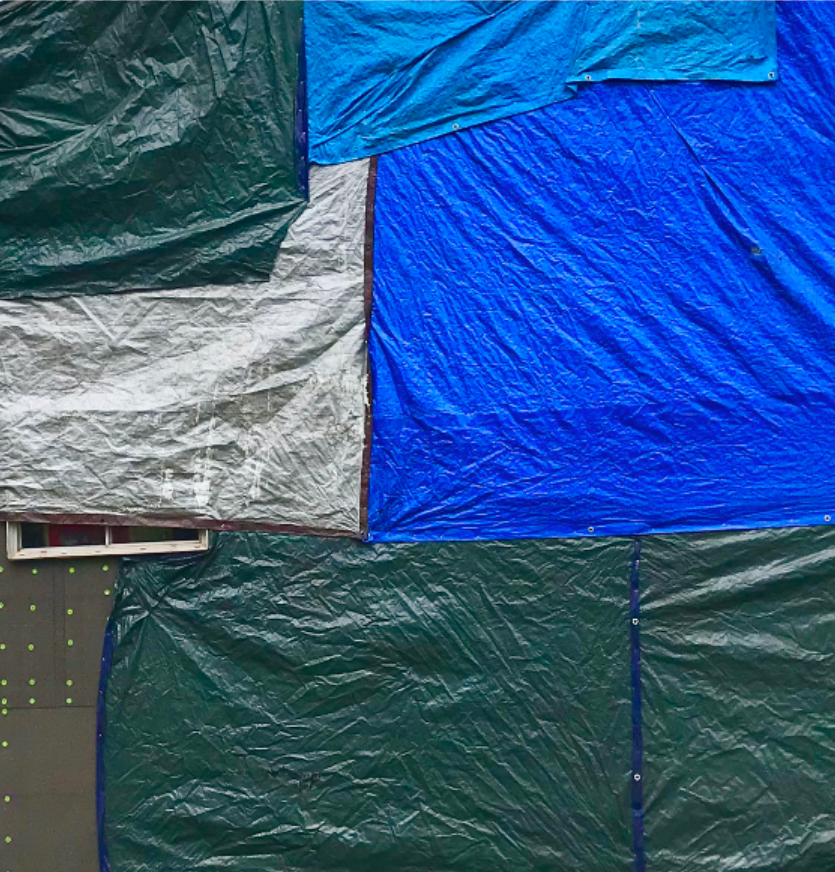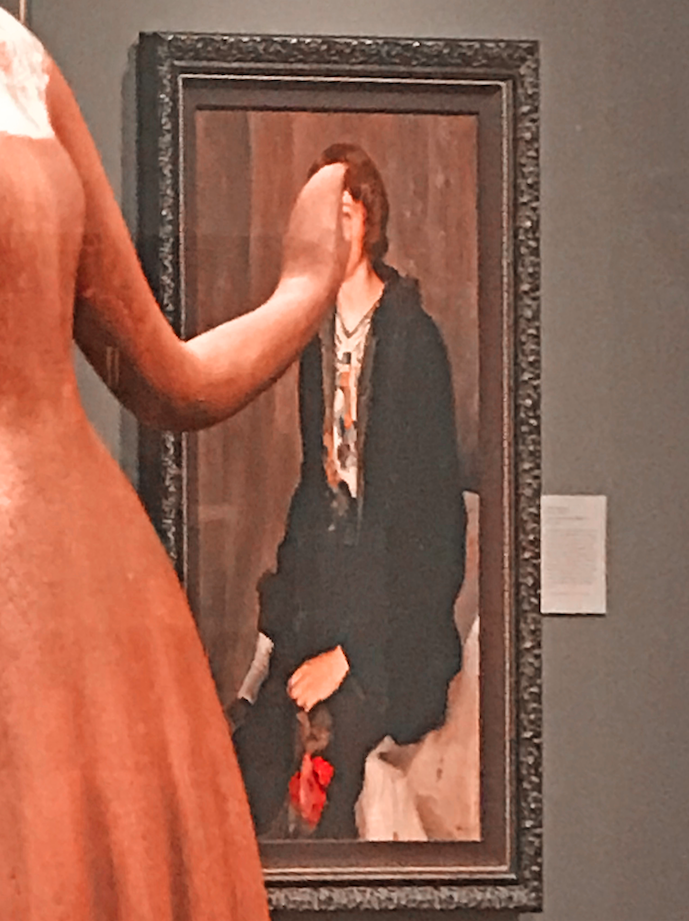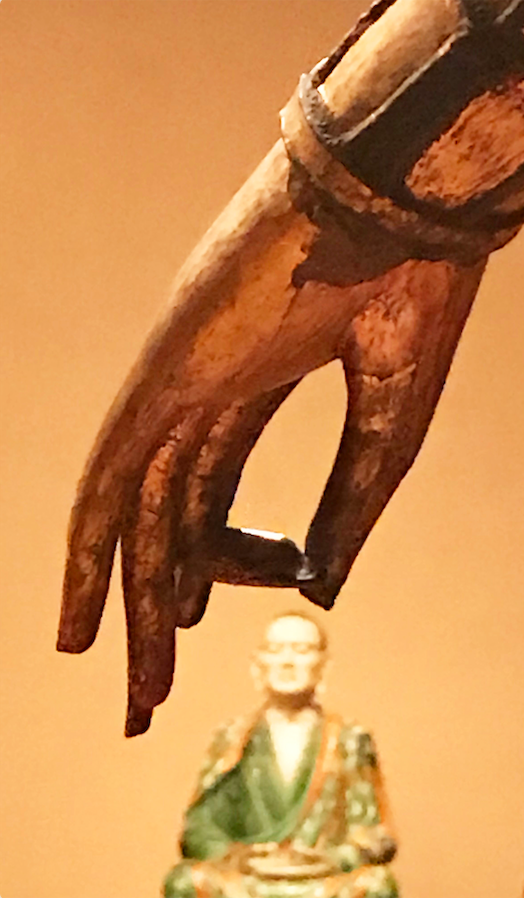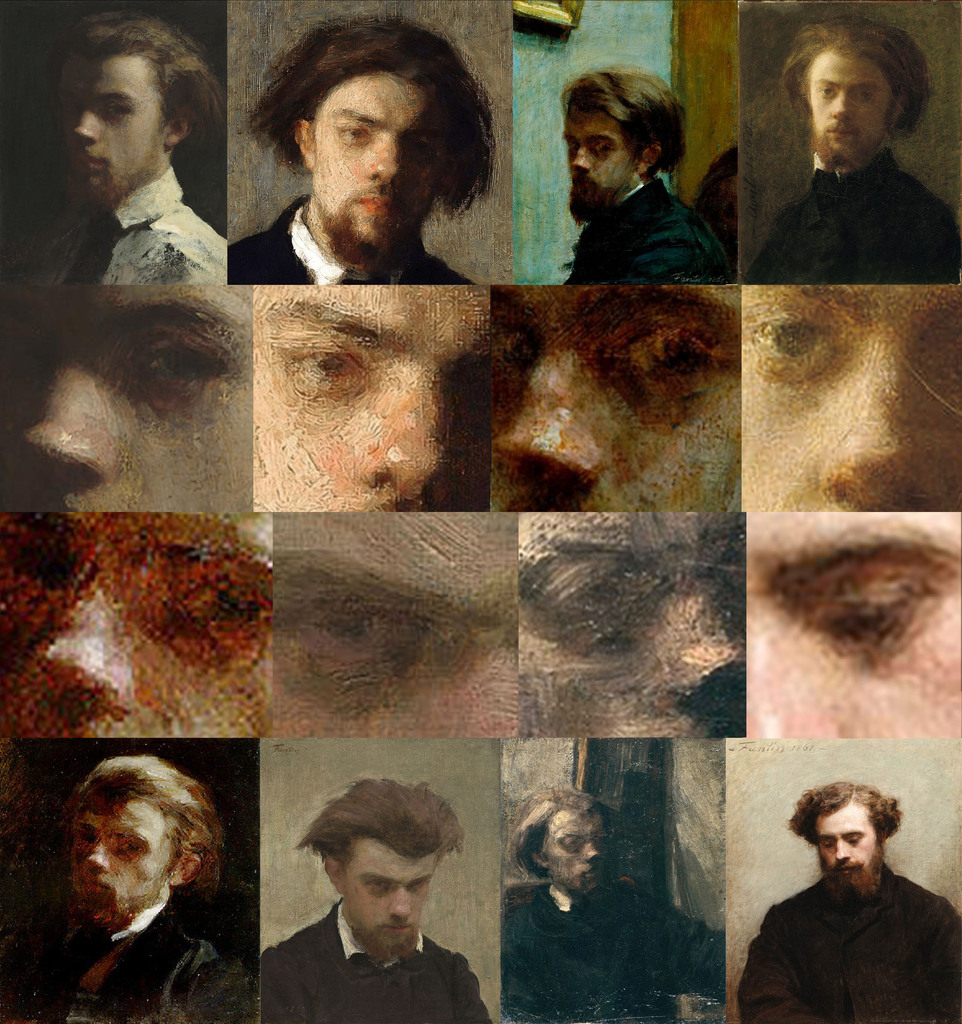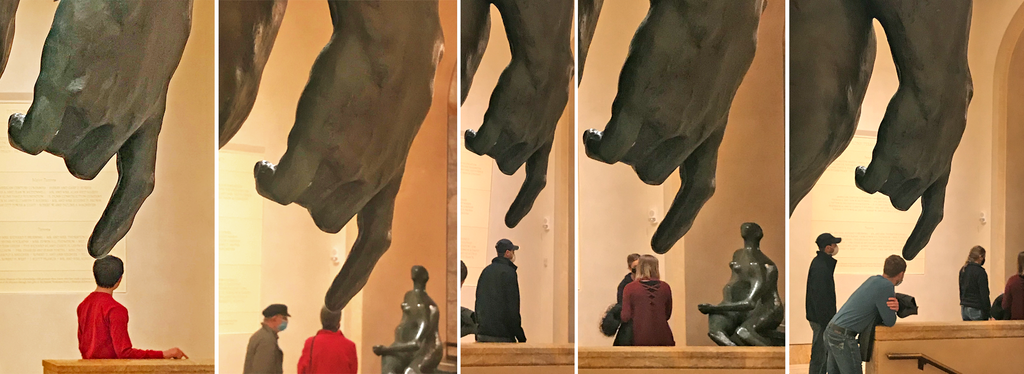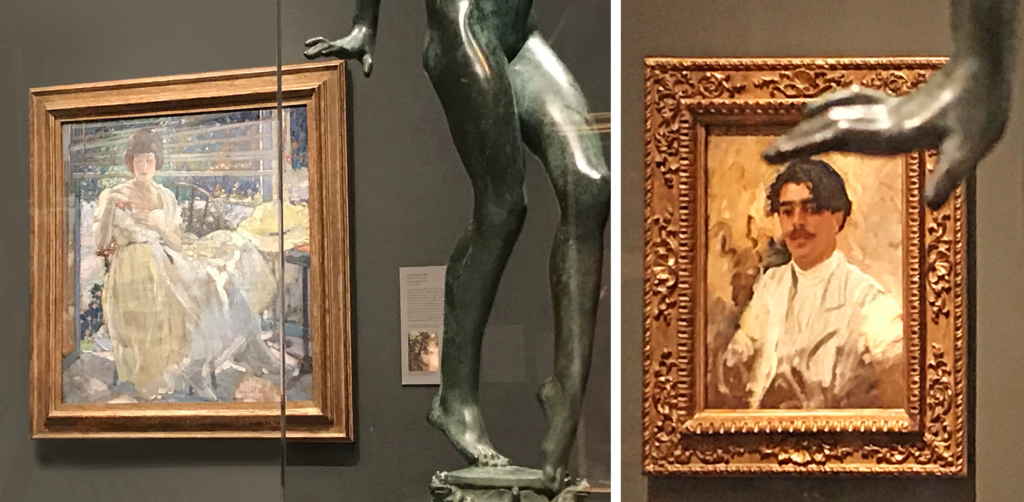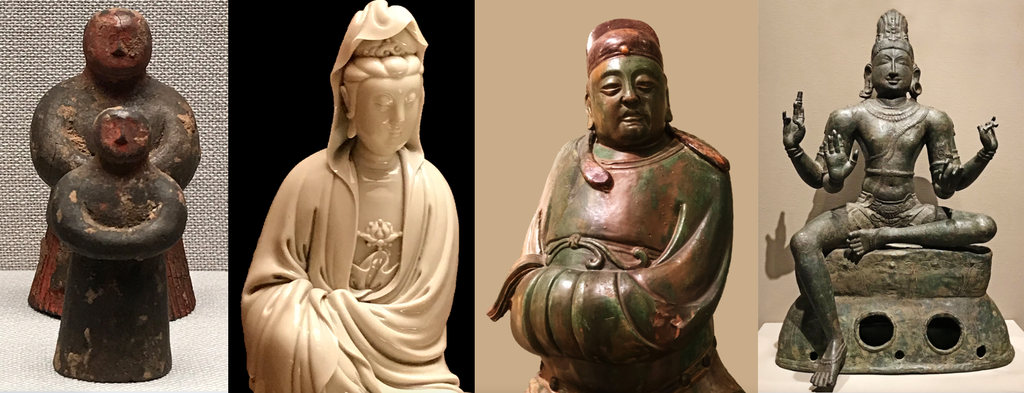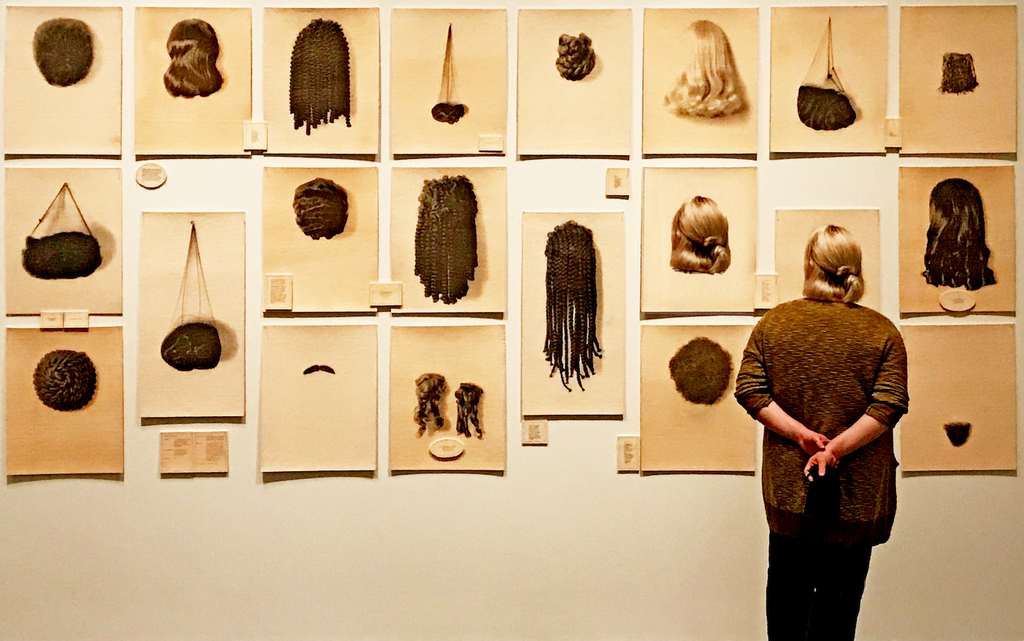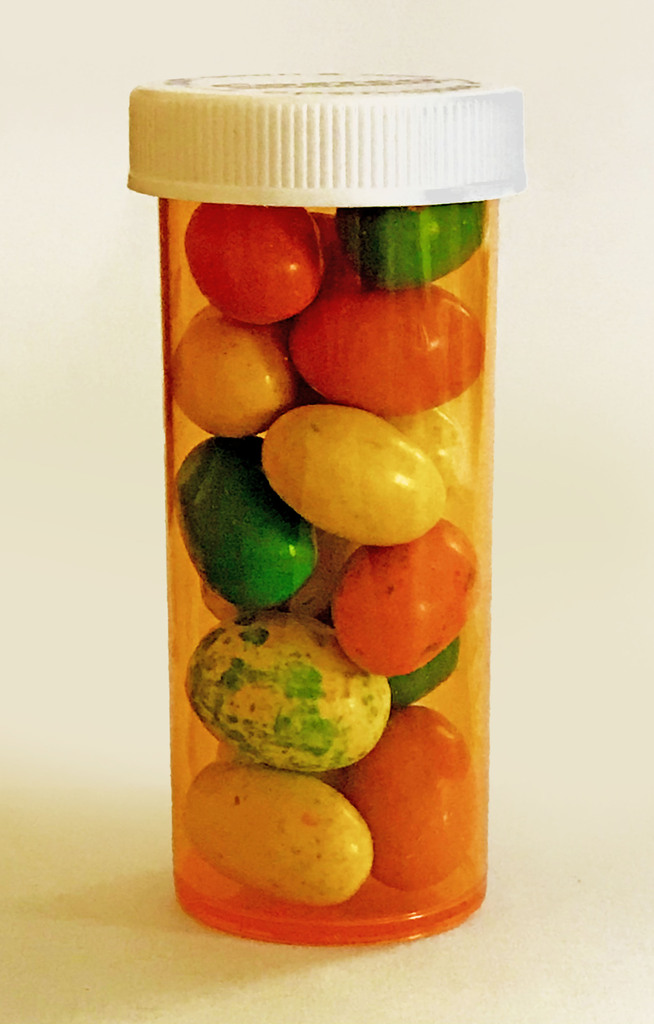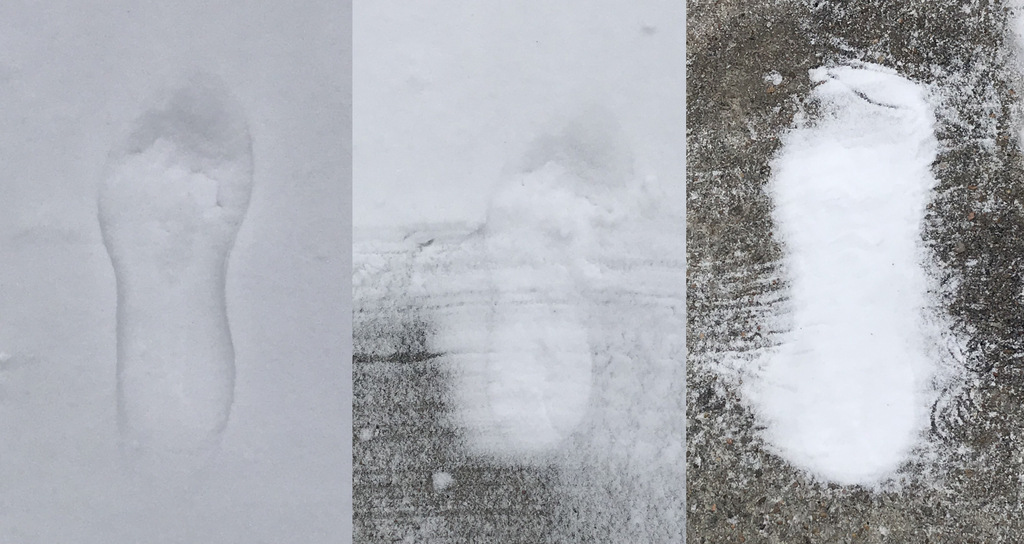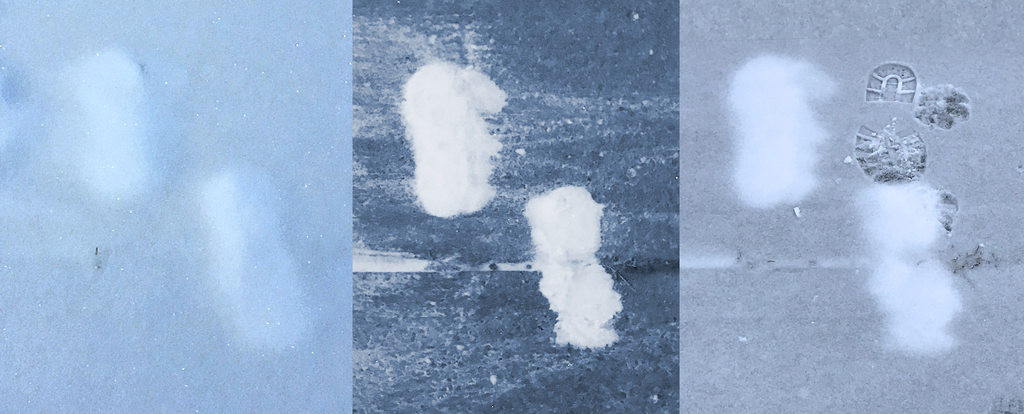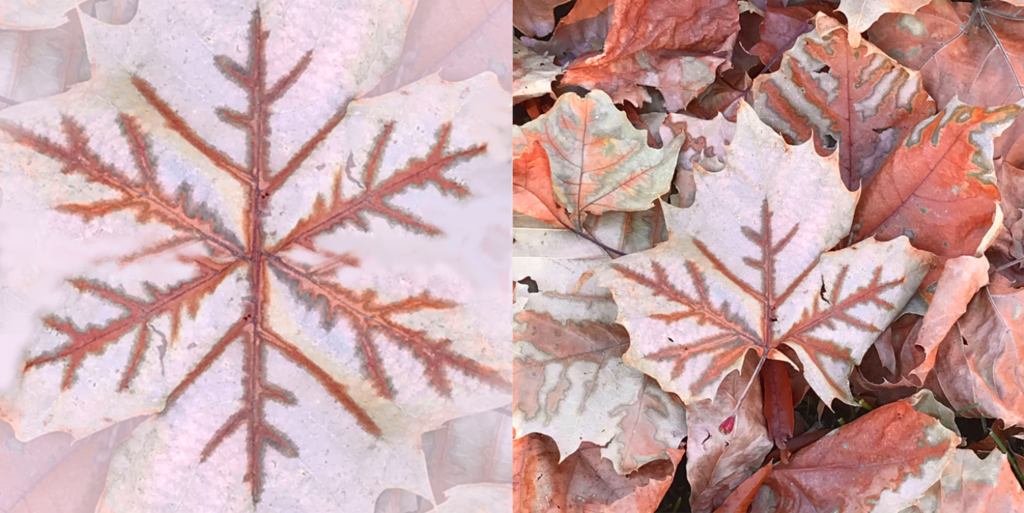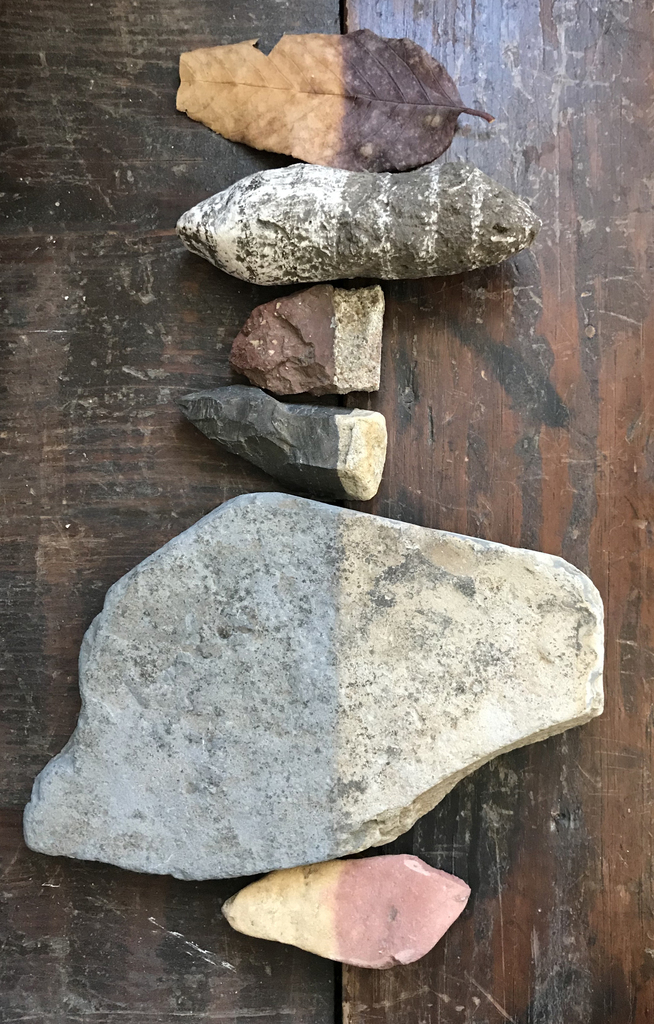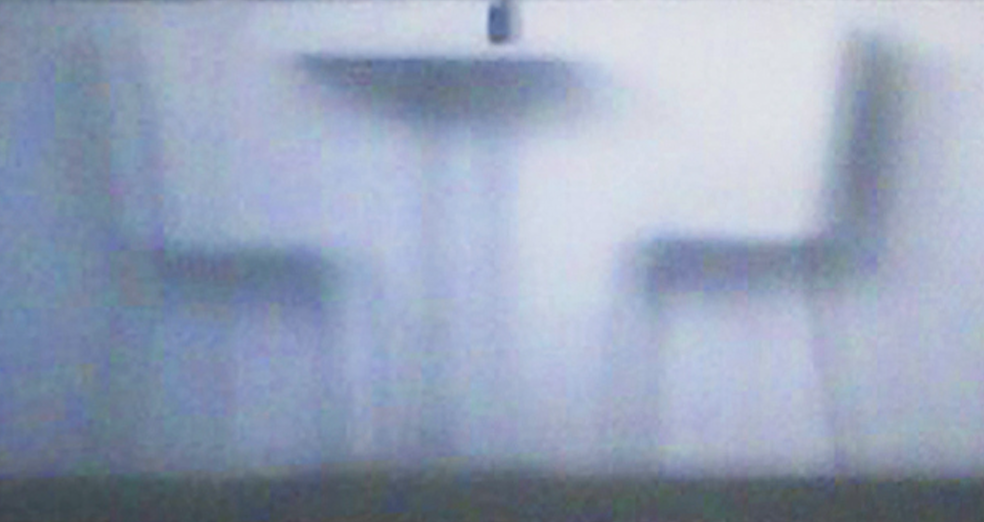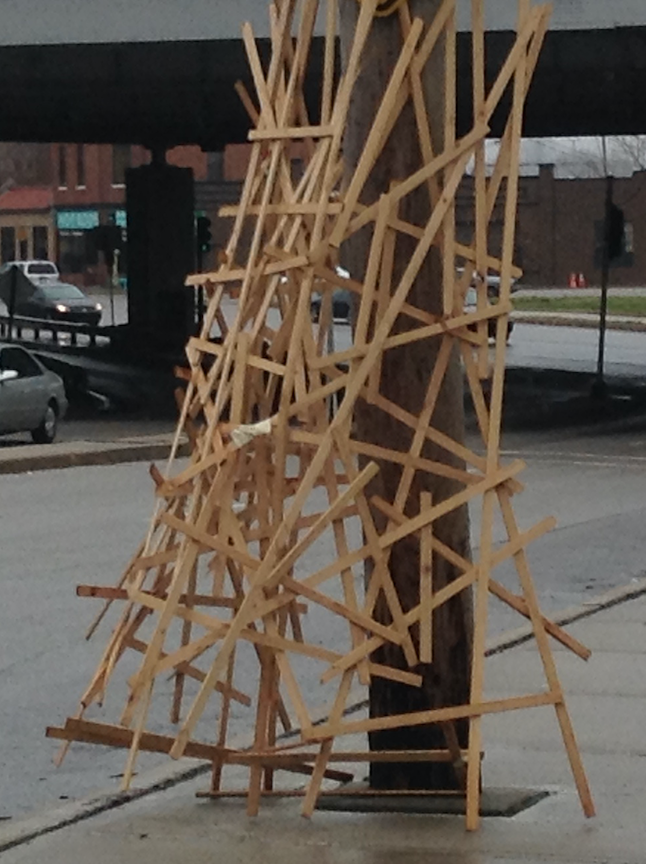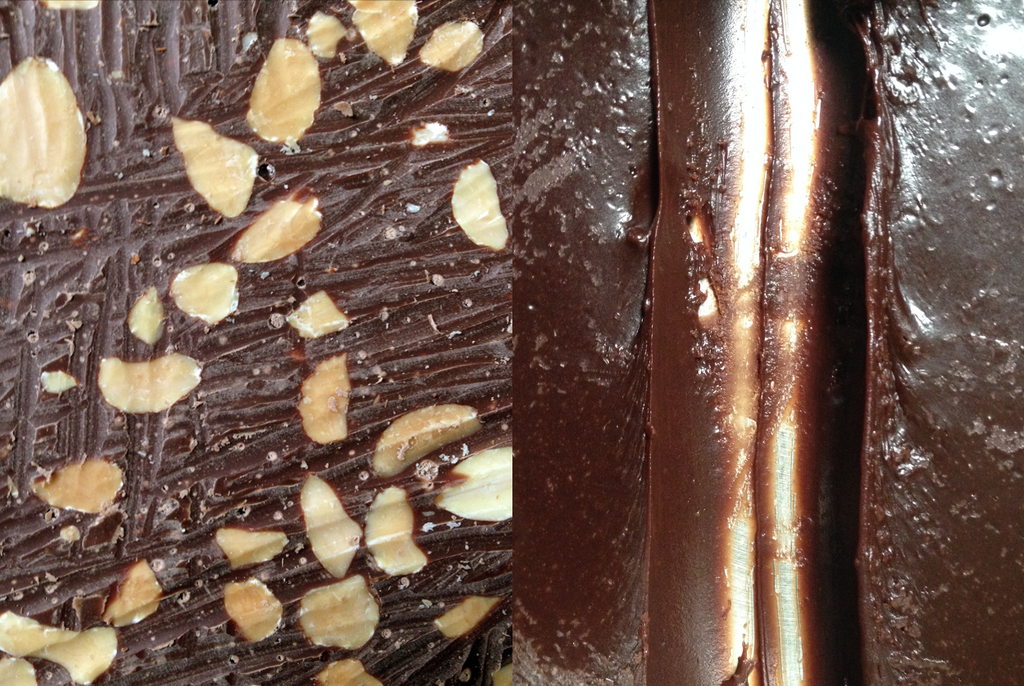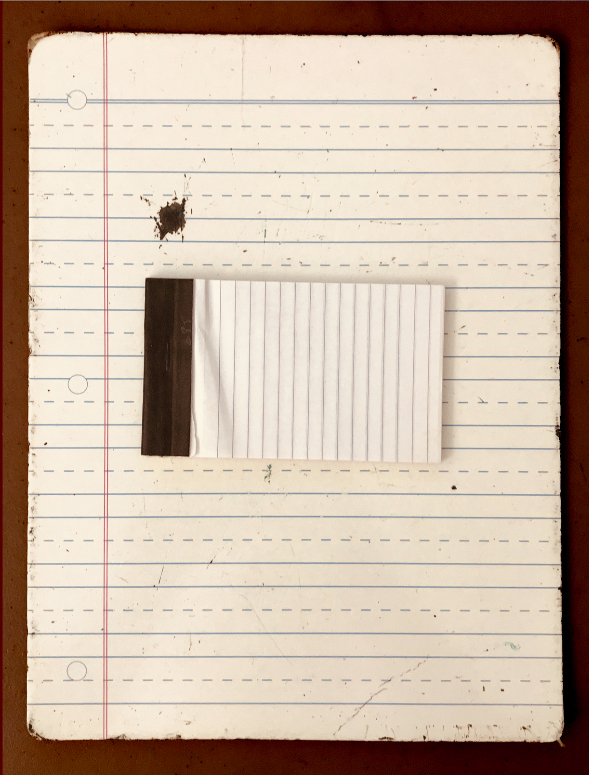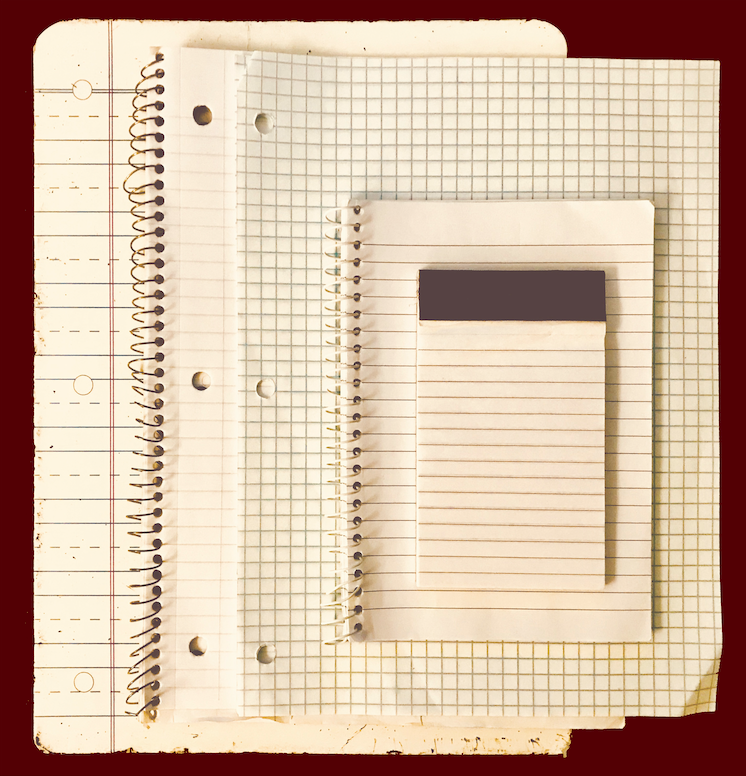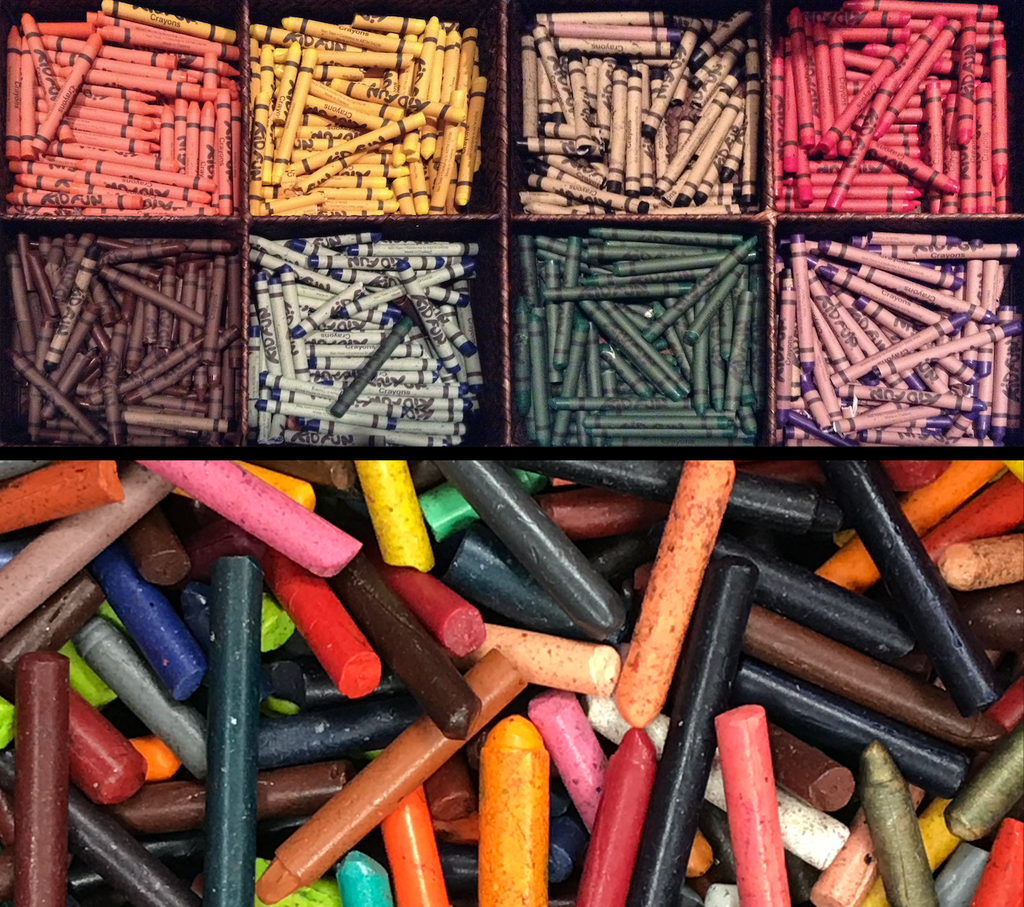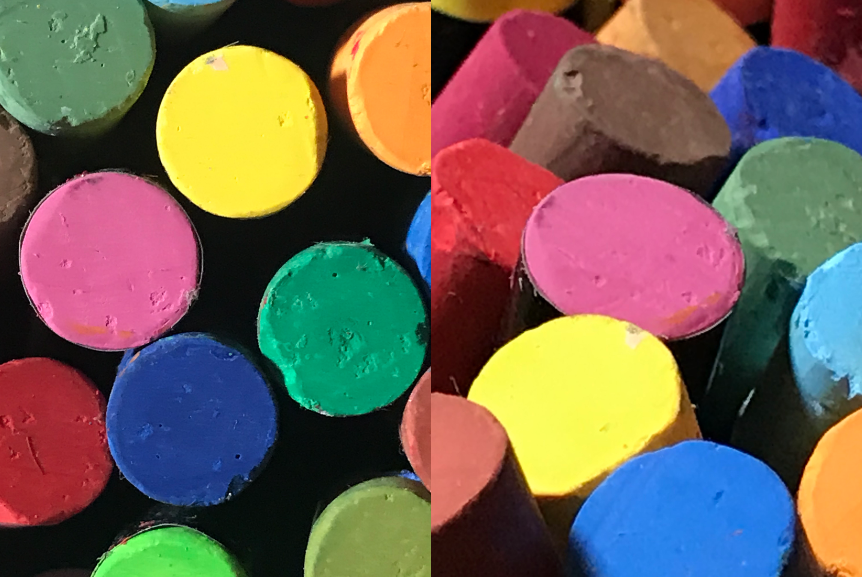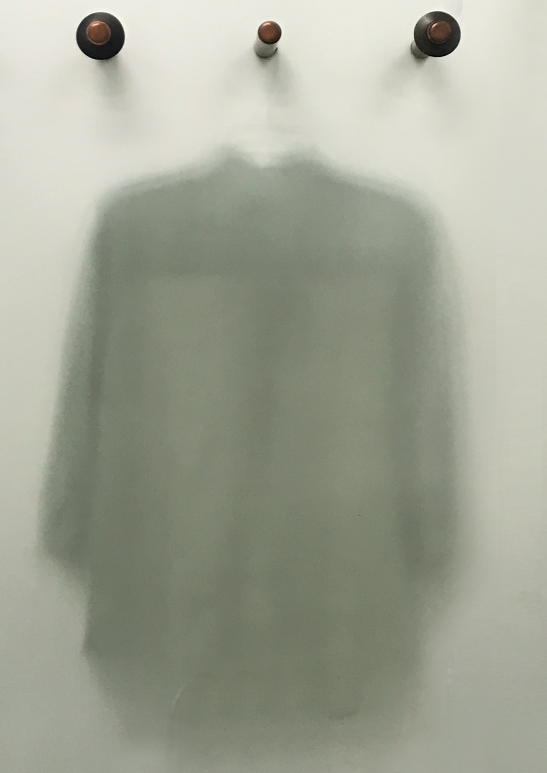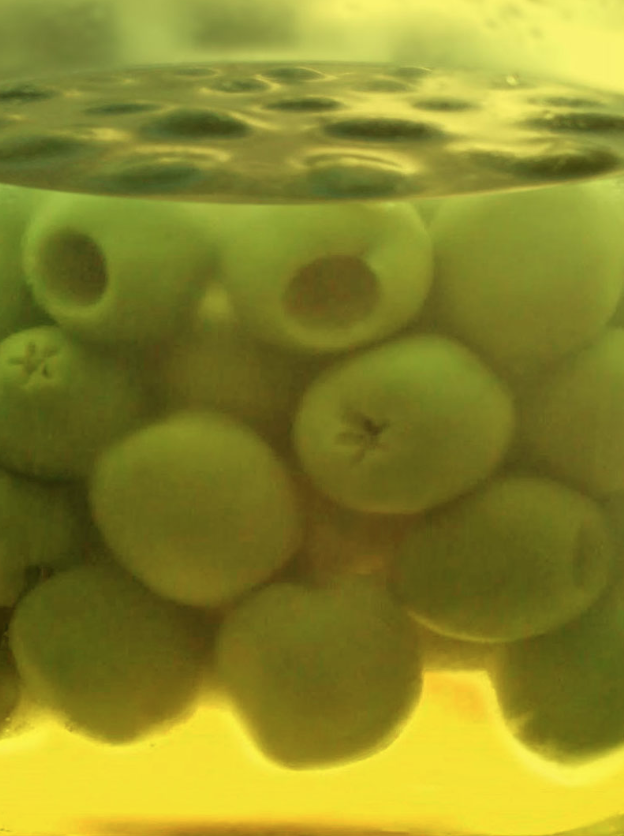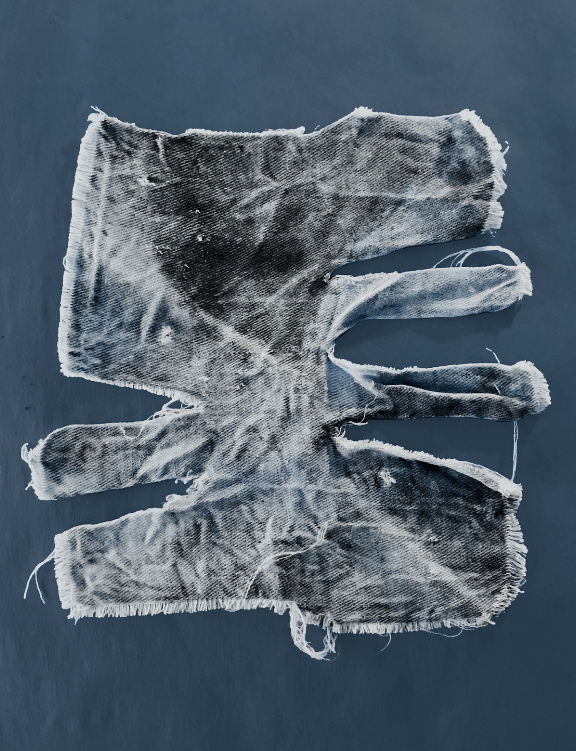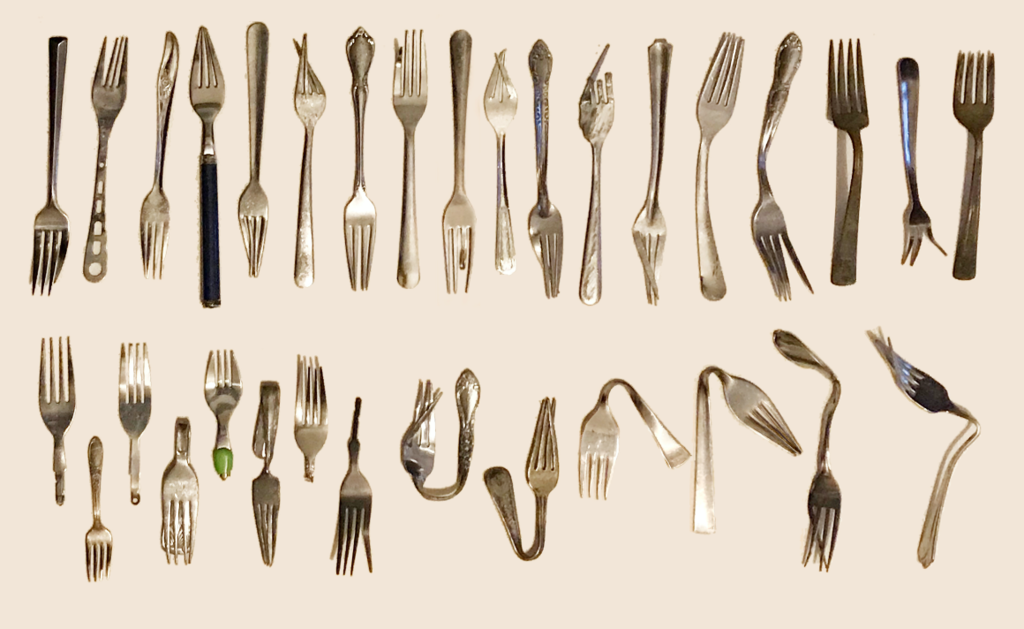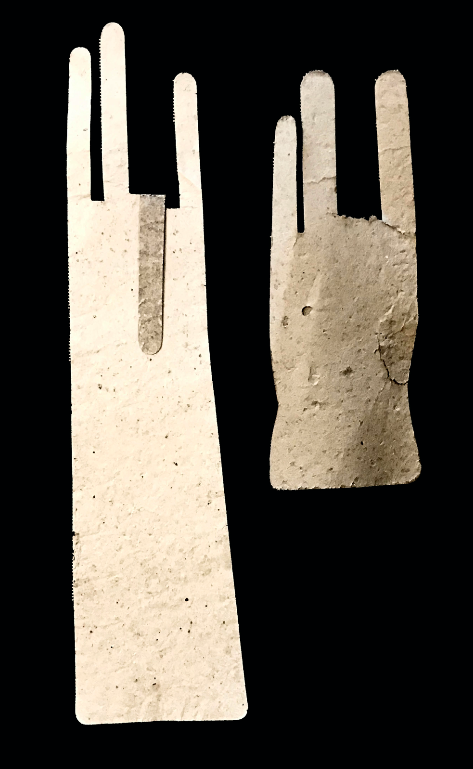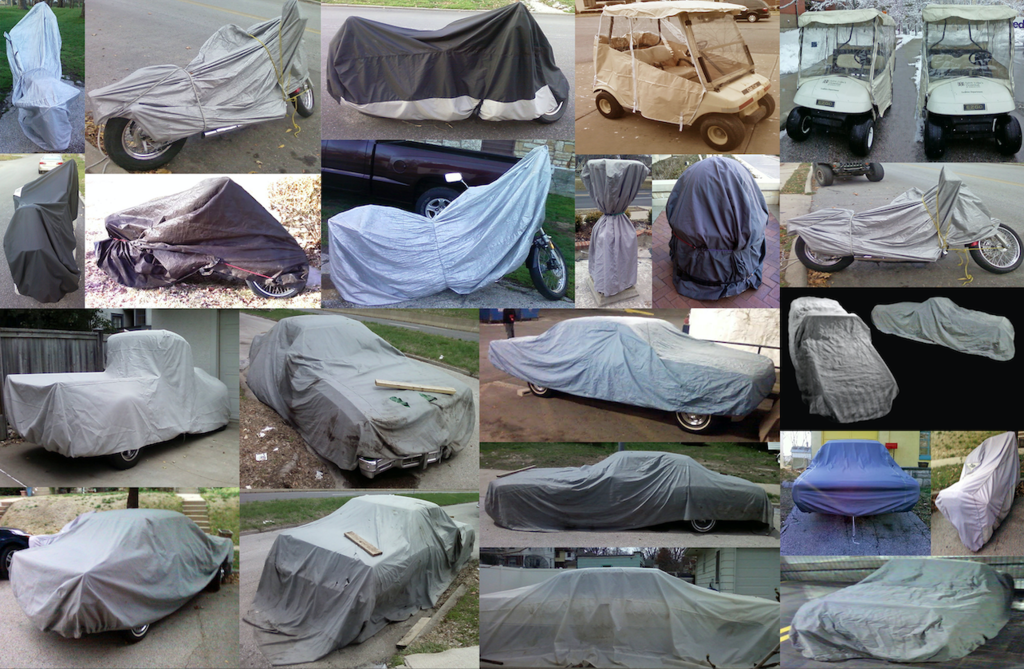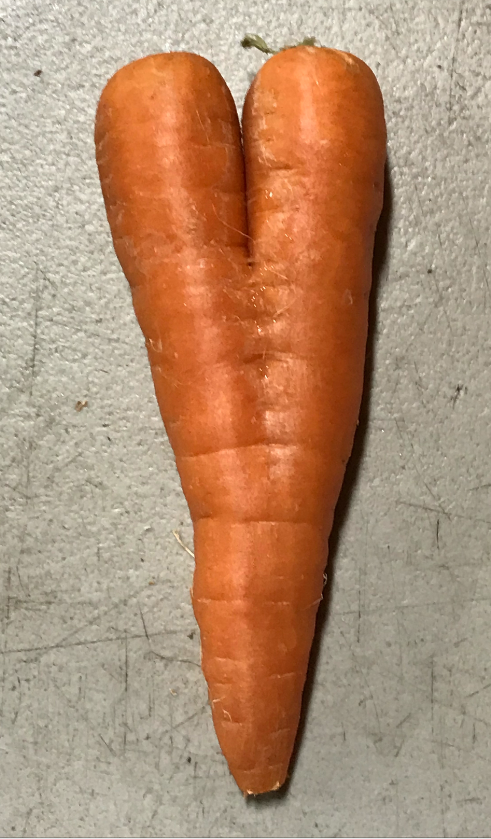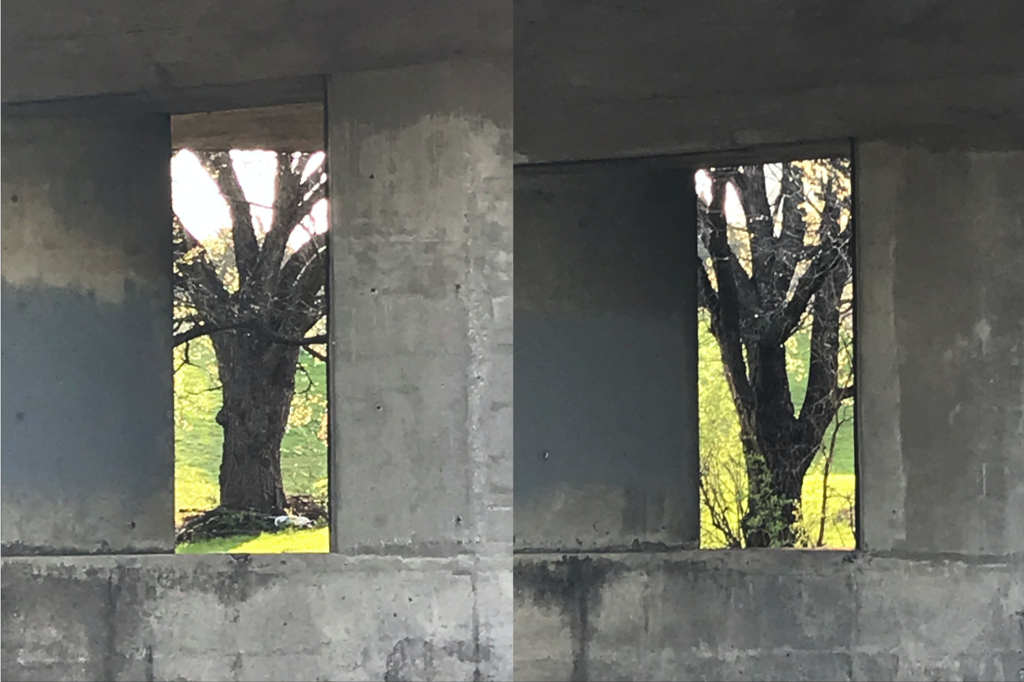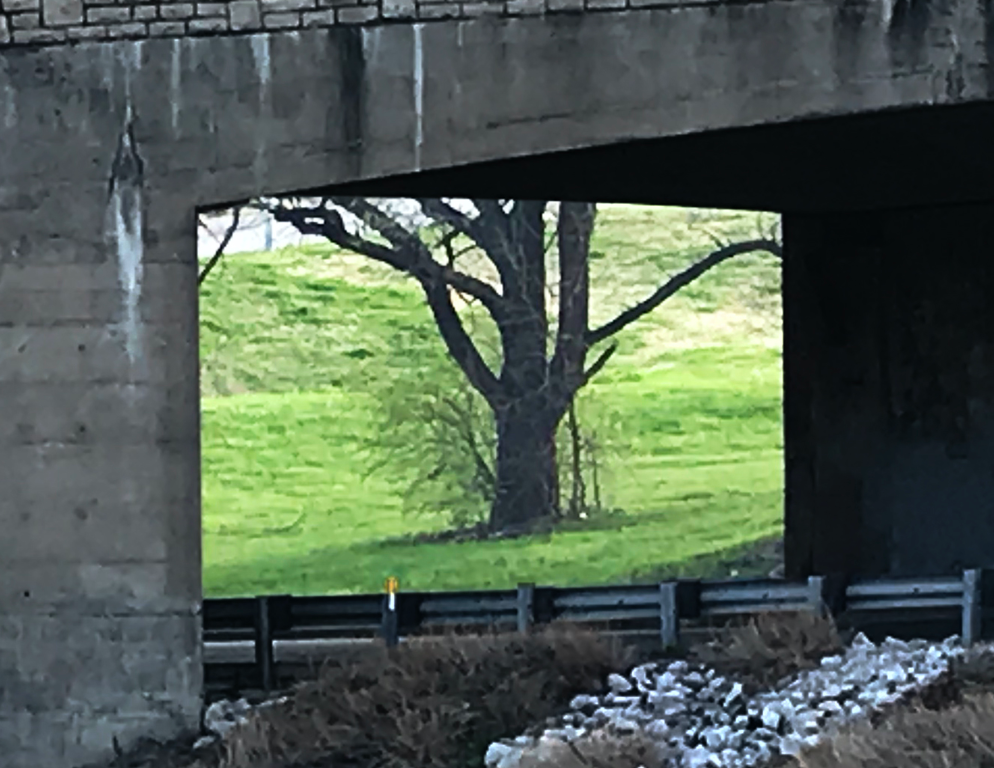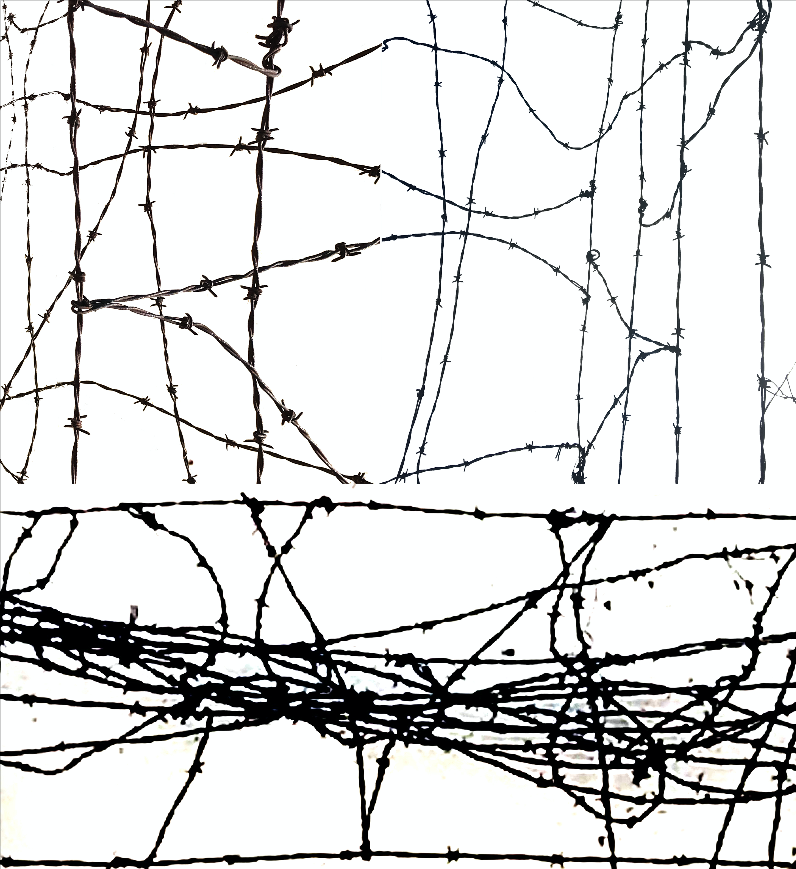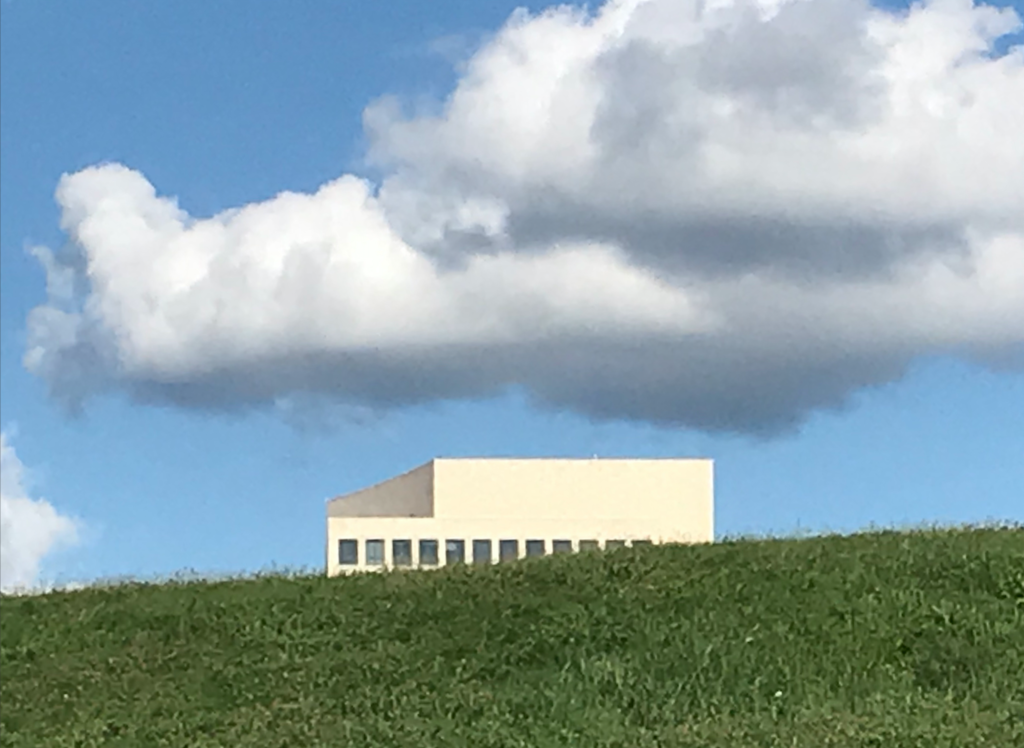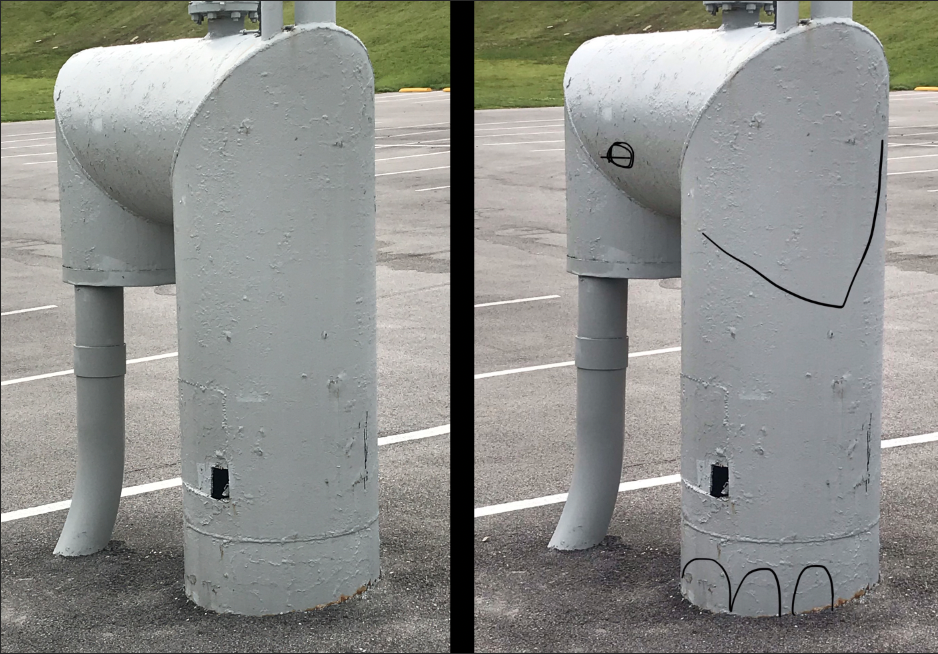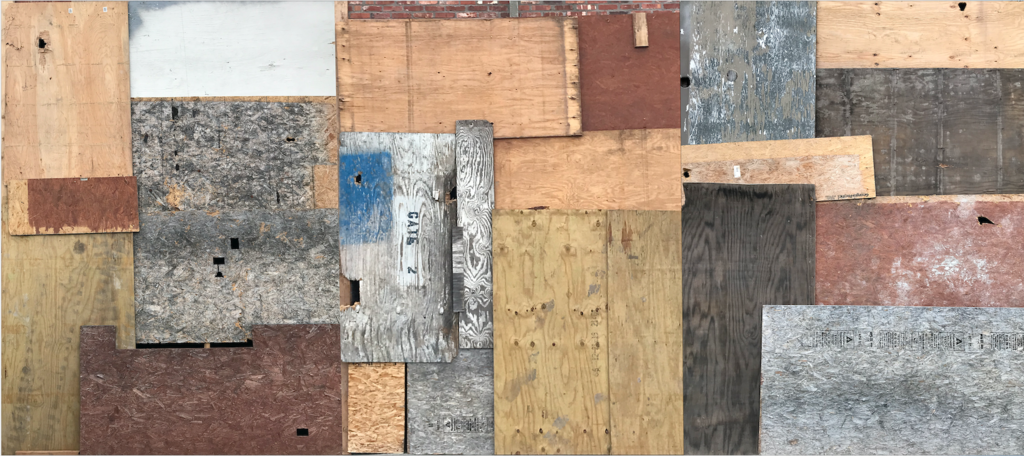
I wasn't planning on this but there were a bunch of A’s on the sidewalk, near an E and a d, and then I just HAD to...
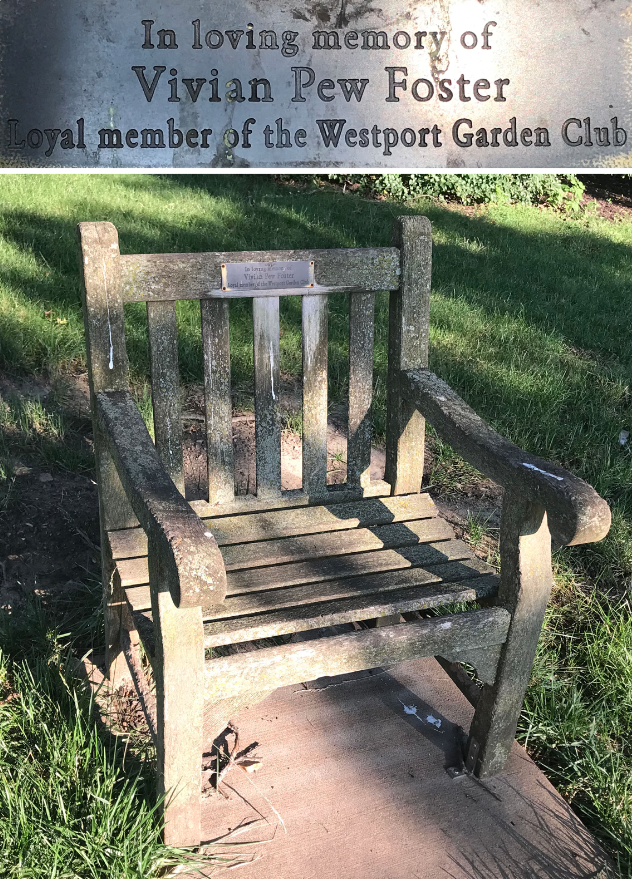
Her memorial is decidedly not a pew, or a bench. With her name? Redundant. No, it’s a chair. Seating for one. Her plaque reads “Loyal member of the Westport Garden Club.” Did she want to be Chair of the Garden Club, or the plaque to say “Royal?” No blooming idea.

on a guided walk back in December with folks across the country and beyond, linked via Zoom, the guide for a stretch was public radio journalist/wise woman, Lulu Miller, who gave an assignment: find the colors of a rainbow...she was toting her youngster in a sling and just as she completed her rainbow (beautiful red and blue wild flower berries and the like), my phone died - by the end of her rainbow, mine was mostly bits of plastic trash...until, on my way back home I found a little roadside United Nations of utility service flags, and a purple yard ornament
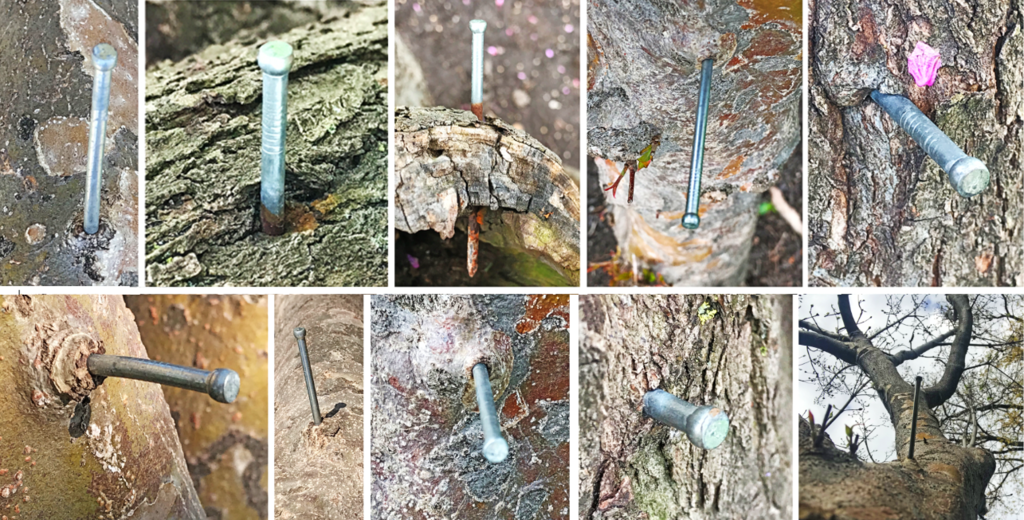
not sure why they're there - maybe to hang something, as they're all about the same height - one nail per tree, probably not a tree house - I remember some cruel looking nails in an old fruit tree and being told they were a cure for iron-deficiency
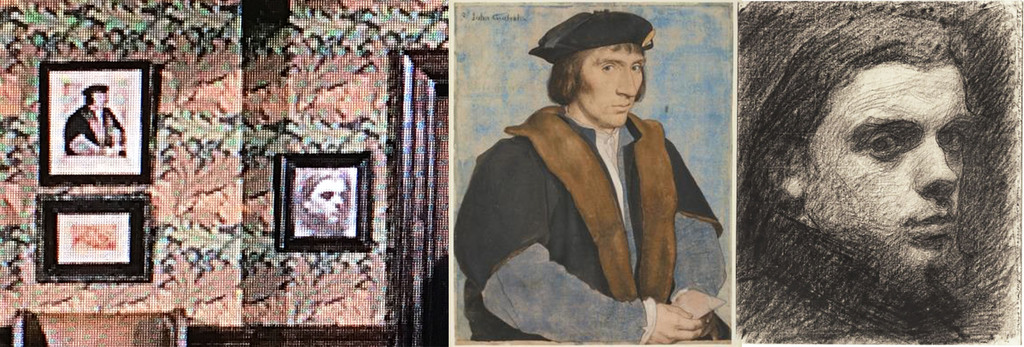
As Eliza Doolittle might say, 'enry 'iggins 'as an 'ans 'olbein & an 'enri Fantin-Latour in 'is 'ouse - I was so distracted by MY fair lady being distracted when we watched My Fair Lady on tv, that the background details caught most of my attention - specifically 2 portraits on one wall
this Hans Holbein the Younger portrait reminds me of Christopher Columbus in old history books, but research (courtesy of art history OCD) reveals that it's a portrait of John Godsalve - near it is a self-portrait by Henri Fantin-Latour - I really like Fantin-Latour's work, the way he pushed paint around

the power in the hands of Rodin's 'Adam' brought to mind the hands in Michelangelo's 'Creation of Man' from the Sistine Chapel
I took some pictures, stripped away the backgrounds, arranged them in the same positions, then confirmed through some research that Rodin was studying Michelangelo when he sculpted 'Adam'
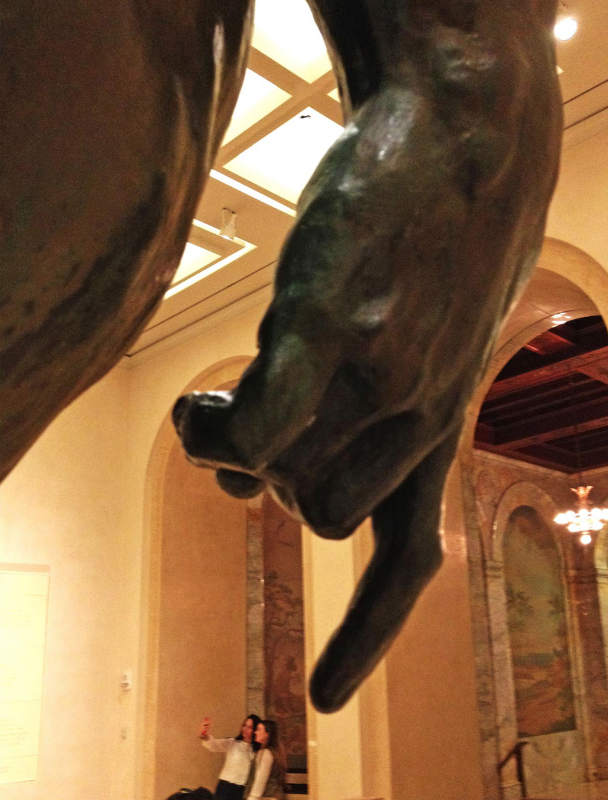
focusing on the hands, I didn't notice the background in this photo, where 'Adam's' hand was pointing to a couple, taking a selfie
mission: to catch more people under the pointing finger...
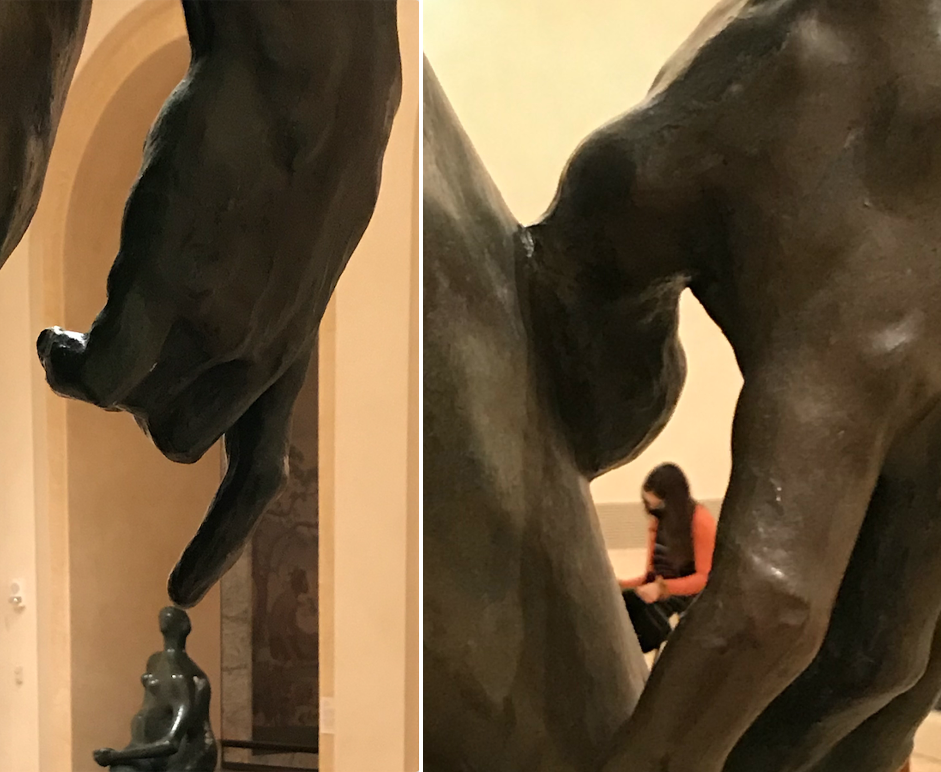
Rodin's 'Adam' and Henry Moore's 'Seated Woman'
Rodin's 'Adam' and another seated woman, a sketching artist
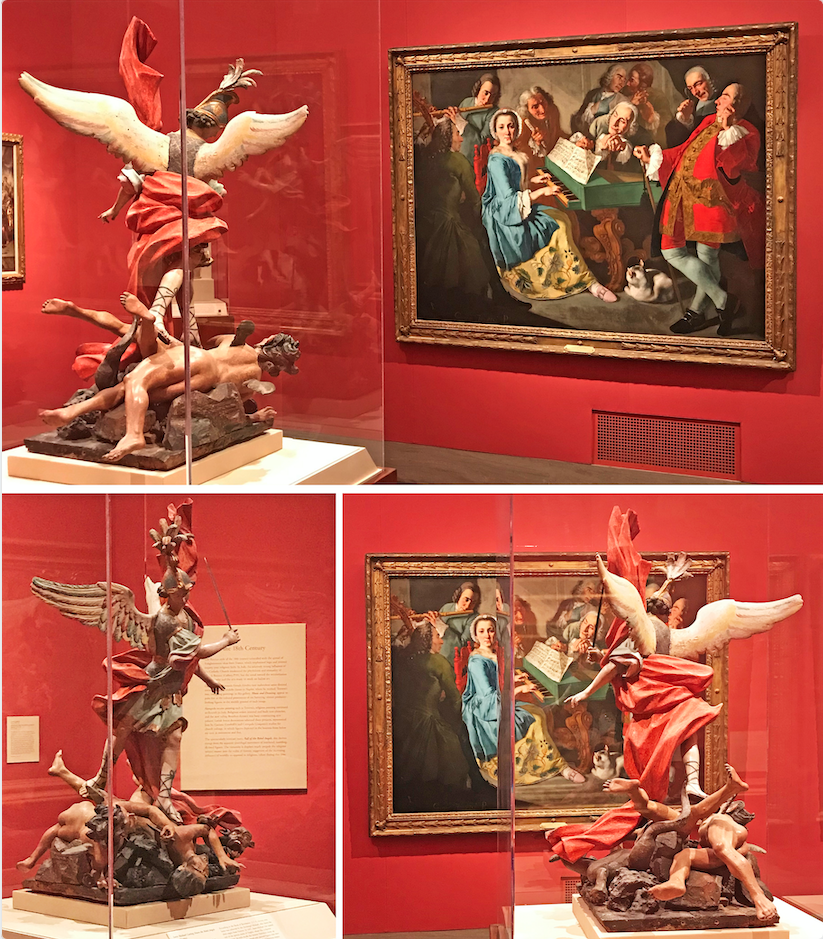
carved wooden hand of 'St. Michael Casting Down the Rebel Angels' gesturing at nearby Gaspare Traversi's 'The Arts, Music'

St. Michael: poking the harpsichordist in the face, turning the sheet music, accompanist
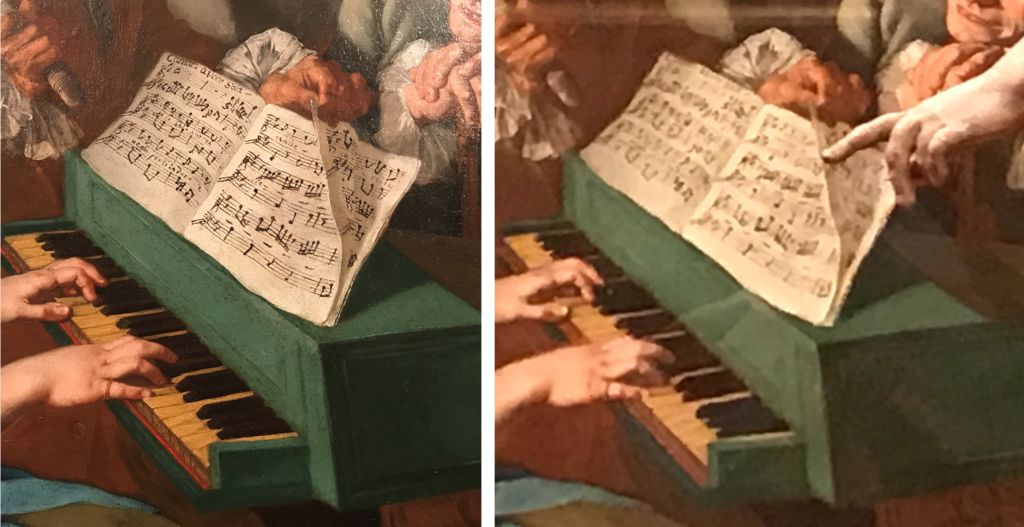
two photos of the painting detail: one at right, taken from behind the carved St. Michael, has a glare across the top of the photo, from the case holding the carving
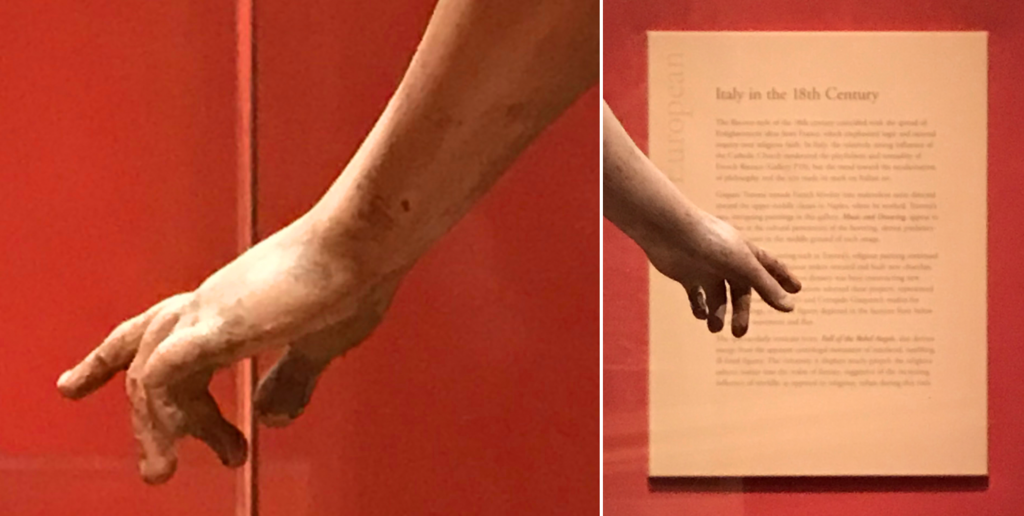
St Michael plucking a line (the edge of his case) and pointing to an informational panel
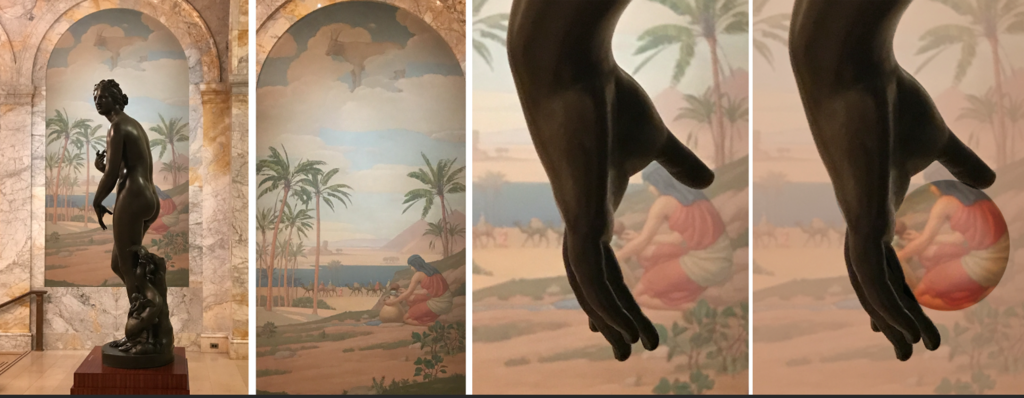
Massimiliano Benzi's copy of the 'Venus de Medici' in front of Andrew Schwartz's 'Egyptian Art' mural panel...
the figure framed by her hand suggested a ball, hi-lighted with photoshop

Harriet Whitney Frishmuth's 'Play Days'
John Singer Sargent's 'Francisco Bernareggi'
Richard Edward Miller's 'The Sun Porch'
Ernest Lawson's 'On the Harlem'
Play Days on the Harlem
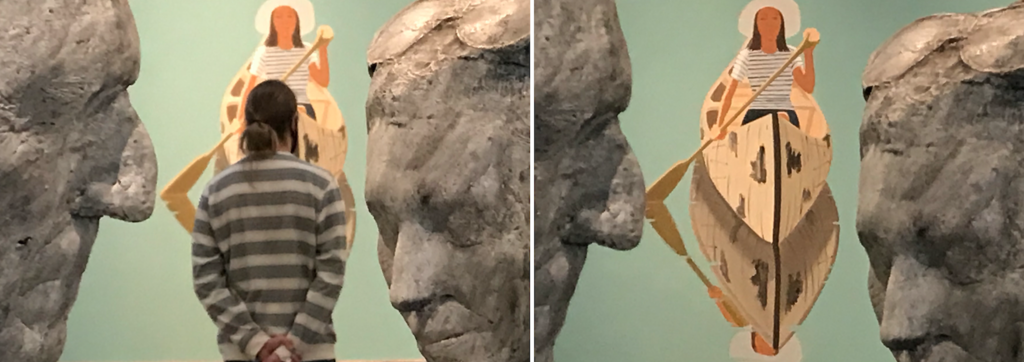
George Segal's 'Chance Meeting' with Alex Katz's 'Good Afternoon'
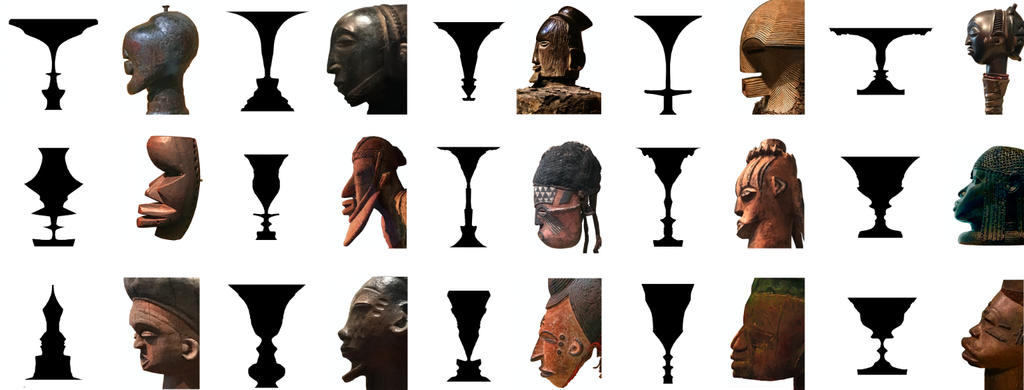
the profile of an African mask brought to mind vase/profile optical illusions - African masks and sculpted faces hold a depth of spirit, and their silhouetted profiles make striking vessels
from L, top: Democratic Republic of Congo, Teke culture, 1900s, wood clay fiber earth pigment; Democratic Republic of Congo, Hemba culture 1800s, wood pigment; Democratic Republic of Congo, Songye culture, 1800s, wood cloth; Democratic Republic of Congo, Dongye culture, late 1800s early 1900s wood pigment fiber hide shell; Democratic Republic of Congo, Ceremonial Axe, wood iron copper beads string 1800s
middle: Liberia, Kran culture, early 1900s, wood pigment; Mali, Mande culture 1100s-1500s, terracotta and pigment; Democratic Republic of Congo, N. Mete culture, 1900s wood raffia cloth copper fiber pigment; Nigeria, Agbarho area, Urhobo culture, early 1900s, wood pigment; Nigeria, Edo culture, 1500s brass
bottom: Angola or D. R. Of Congo, Lwena culture, c. 1900, wood pigment; Democratic Republic of Congo, Mangebetu culture, early 1900s, earthenware; Nigeria, Igbo culture, late 1800s- early 1900s, wood cloth pigment; Nigeria, Yoruba culture, early 1900s, wood pigment; Mozambique or Tanzania, Yao culture, 1800s, wood resin fiber metal hair
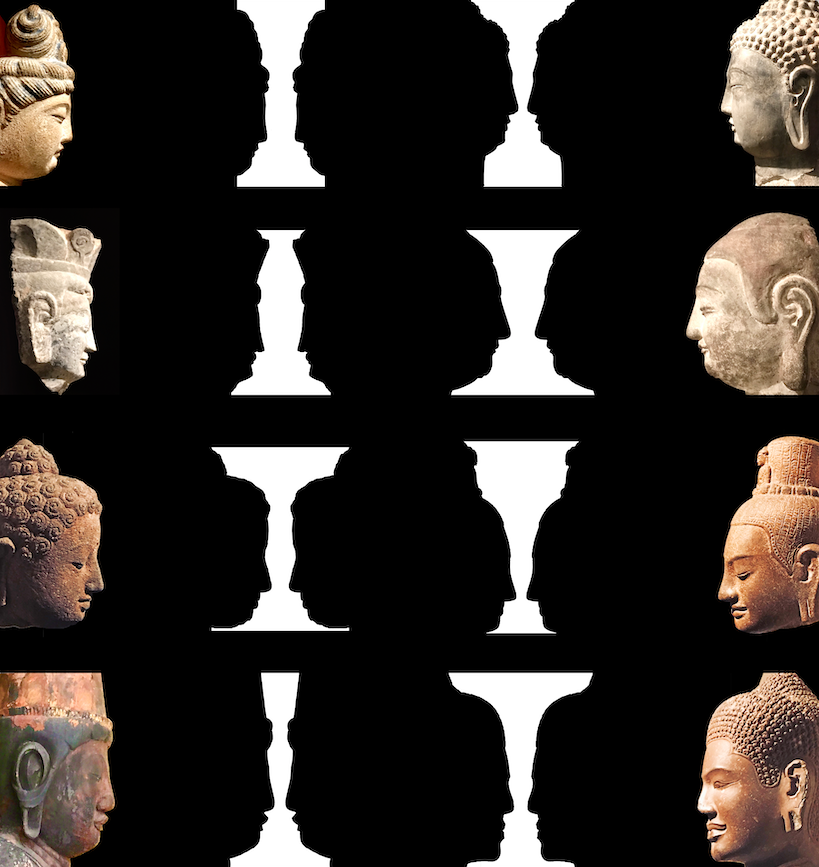
more profiles, Asian art, Nelson-Atkins
L/R, top row: gray sandstone Bodhisaattva, Cave 17 Tang Dynasty 750; gray limestone Buddha, Tang Dynasty 8th century; row 2: limestone Bodhisattva, Henan Province 515-520; sandstone Buddha, Cave 8 Sui Dynasty c. 584; row 3: volcanic stone Buddha, Indonesia, Central Java, ca 825; gray stone Buddha, Cambodia, Khmer Dynasty, 11th century; bottom row: wooden Bodhisattva Kannon, Japan 700-800’s CE; gray sandstone Bodhisattva Avalokitesvara, Cambodia, Khmer Dynasty, late 12th-13th century
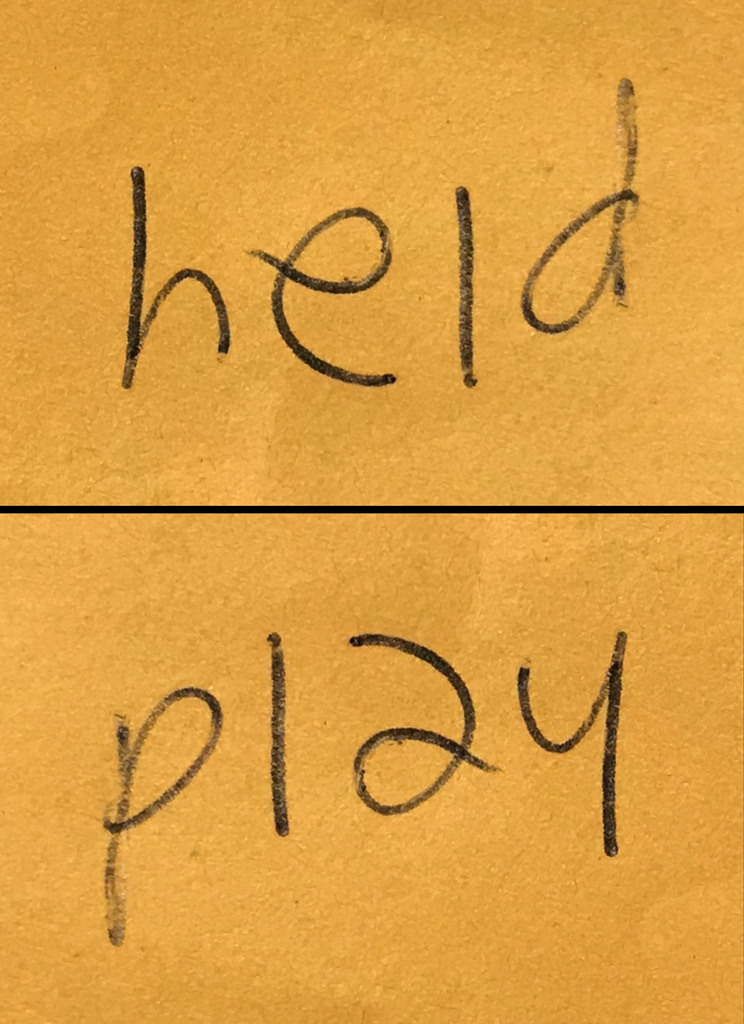
I didn't understand this note that said 'held'
turned it over, didn't understand why it said 'play'
realized it was an instruction: 'p124'
start on page 124
page 124 was OK, but I liked it more when it said 'play'
